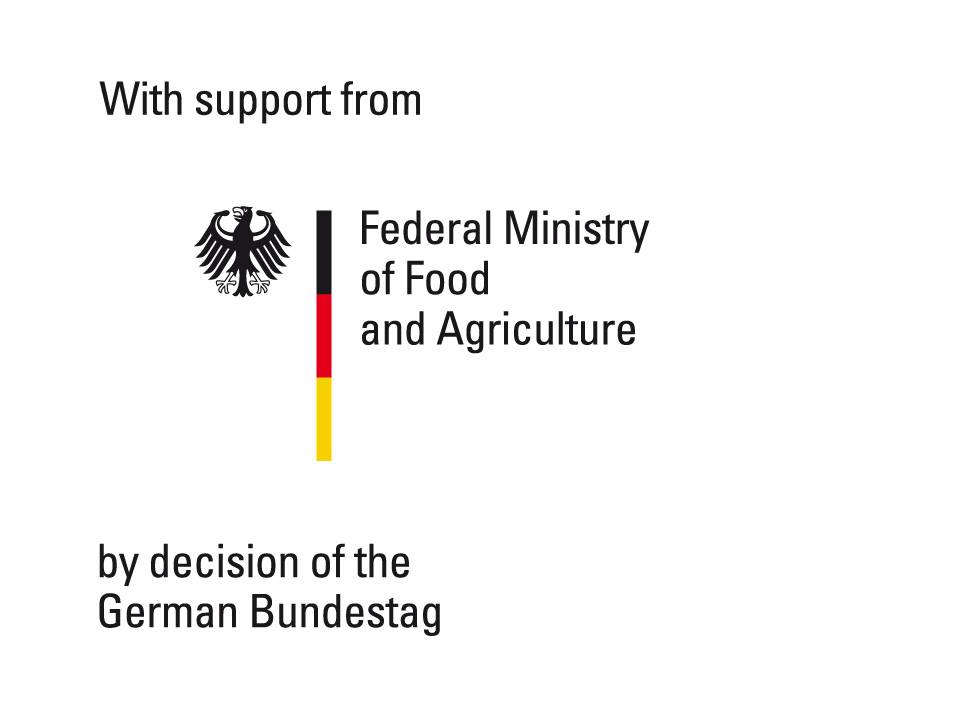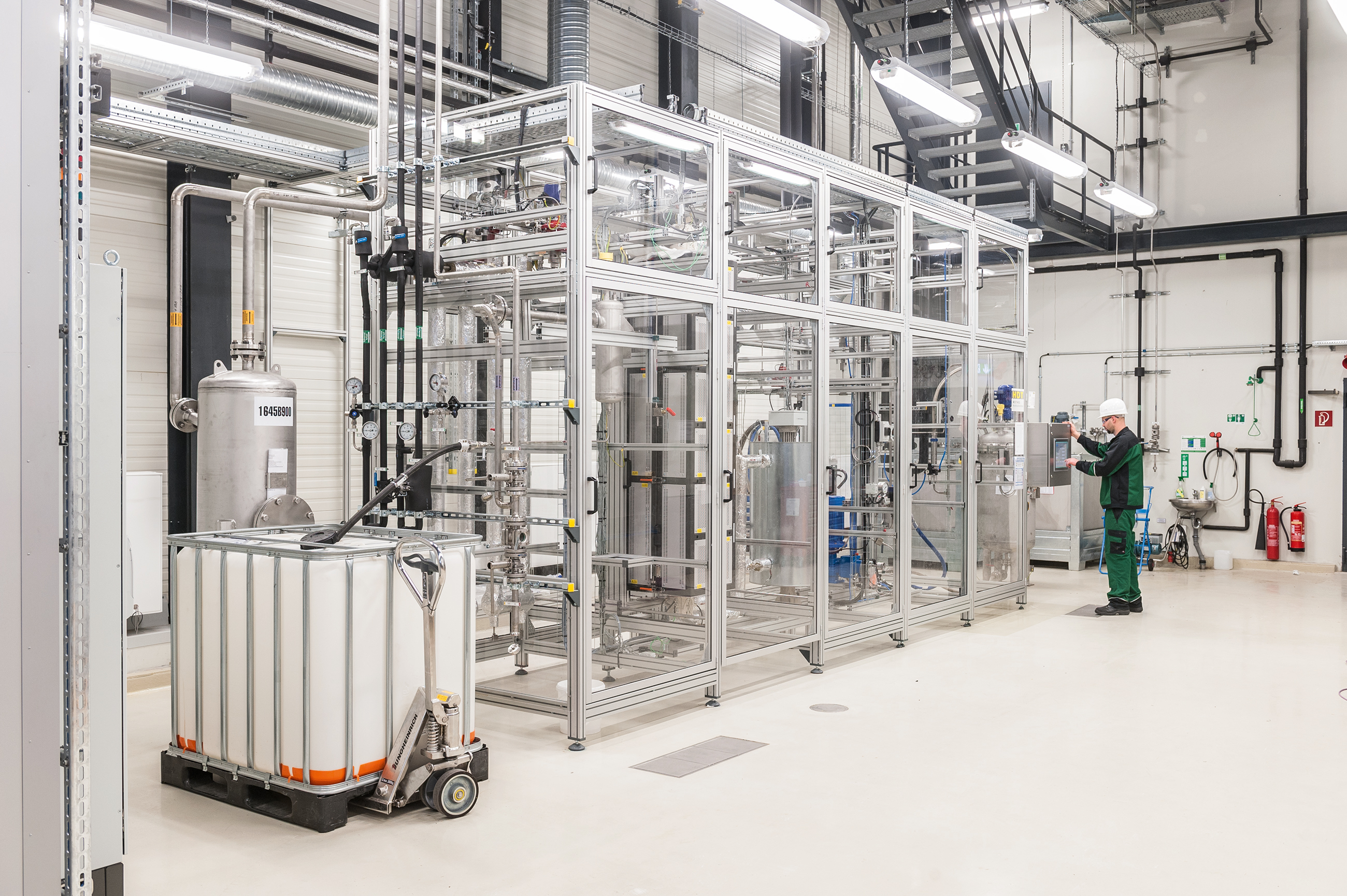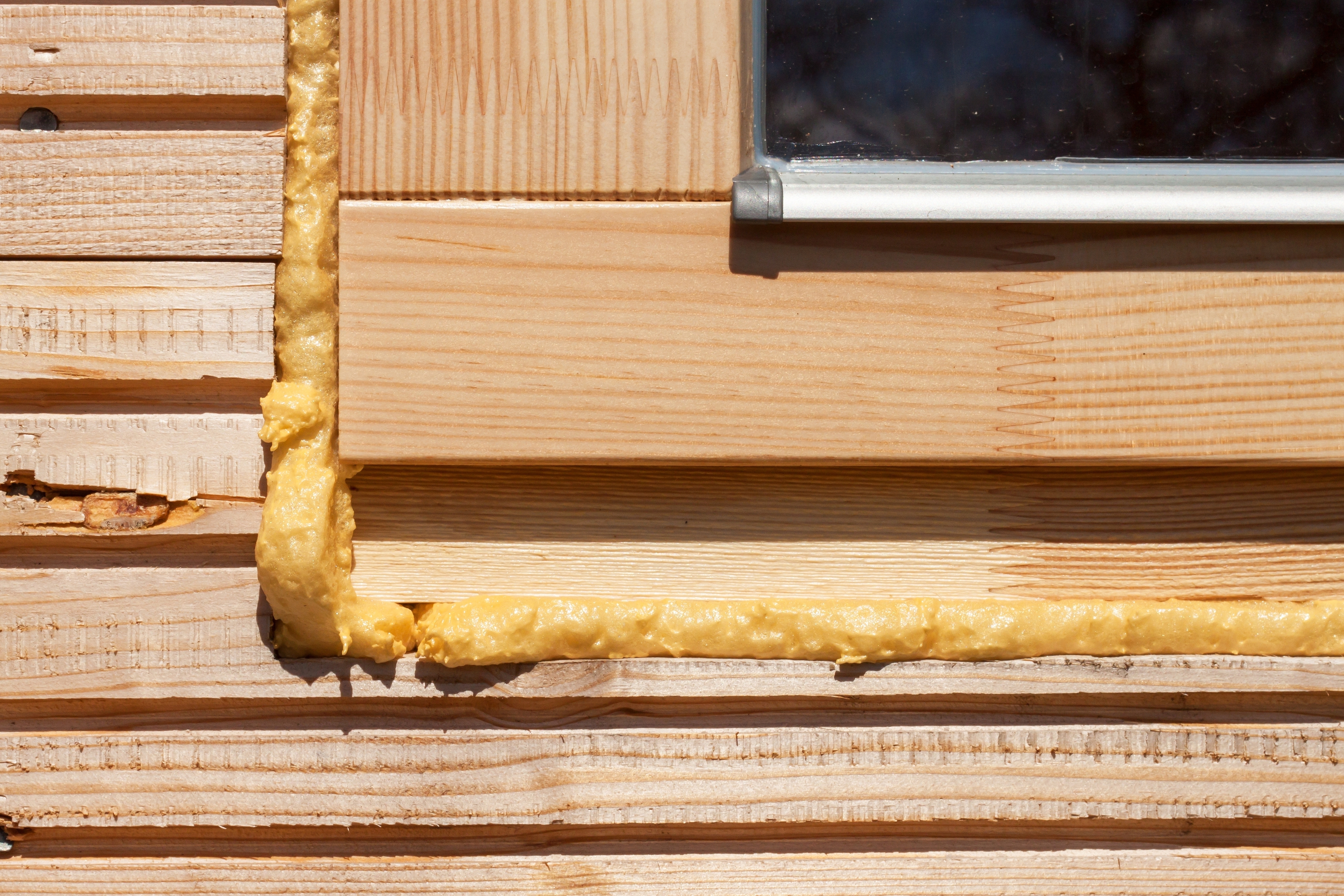As part of the “Lignoplast” project, Fraunhofer CBP and Fraunhofer IGB have developed processes for the chemical industry to produce plastics from wood. The basis are lignins contained in woody biomass. By means of base‑catalyzed cleavage, these organic compounds are decomposed into phenol derivatives, which can be further processed into high‑quality polyurethane foams or polyols for polyurethane coatings.
Lignoplast – Functionalized lignin degradation molecules as platform chemicals
Aromatic building blocks from various lignin types for the production of adhesives, paints, polyurethanes and epoxides
Lignins, with a share of up to 30 percent in woody biomass, are among the most common organic compounds. However, due to the heterogeneity of their aromatic structures, they are difficult to turn into chemical applications.
Within the joint project “Lignoplast”, a consortium – coordinated by Fraunhofer CBP – was working on new methods to be able to use different lignins in polyurethane, adhesive, paint, and epoxy systems. Depending on the pretreatment method, lignins have different properties that significantly influence further processing. It was necessary to process sulfur‑containing lignins from pulp processes as well as sulfur-free lignins from biorefinery processes (e.g. from the Organosolv process, which is also being intensively developed by Fraunhofer CBP [1, 2]).
The base‑catalyzed cleavage proved to be a suitable method to break down all investigated lignin types into smaller phenol derivatives with a simpler structure. Based on preliminary investigations at Fraunhofer ICT, the multi‑stage process consisting the continuous base‑catalyzed cleavage and the subsequent separation and purification of the products, was successfully transferred to the pilot scale at Fraunhofer CBP [3].
Polyurethanes from lignin
Consortium partners use the resulting lignin fragments for the production of high‑quality polyurethane foams or as polyols for polyurethane coatings of long‑term fertilizers. Application tests revealed positive properties, as well as some additional advantages such as biodegradability. Further work is needed before the products can be placed on the market. Continuous availability of raw materials, improved process stability as well as the economic considerations of the overall process will be aimed at in further activities.
Subprojects
- Project 1: Separation of lignin from lignocellulose, scale‑up and coordination (CBP)
- Project 4: Enzymatic lignin functionalization (IGB-MBT)
- Project 5: Lignin functionalization and polymerization, chemical catalysis (IGB‑BioCat)
Project information
Project title
Lignoplast – Functionalized lignin degradation molecules as platform chemicals for the production of adhesives, paints, polyurethanes and epoxides
Project duration
July 2013 – December 2016
Project partners
- Fraunhofer-Zentrum für Chemisch-Biotechnologische Prozesse CBP, Leuna (Germany) (Coordinator)
- Fraunhofer-Institut für Chemische Technologie ICT, Pfinztal-Berghausen (Germany)
- Fraunhofer-Institut für Grenzflächen- und Bioverfahrenstechnik IGB, Stuttgart (Germany)
- Fraunhofer-Institut für Holzforschung WKI, Braunschweig (Germany)
- Robert Krämer GmbH & Co. KG, Rastede (Germany)
- Jowat AG, Dettmold (Germany)
- Linde Engineering Dresden GmbH, Dresden (Germany)
- RAMPF Ecosystems GmbH & Co.KG, Pirmasens (Germany)
- ASK Chemicals GmbH, Hilden (Germany)
- VTA GmbH & Co. KG, Niederwinling (Germany)
- Zellstoff Stendal GmbH, Arneburg (Germany)
Funding
We would like to thank the German Federal Ministry of Food and Agriculture (BMEL) and the Agency of Renewable Resources (FNR) for funding the project “Lignoplast“, promotional reference n° 22024512.

 Fraunhofer Institute for Interfacial Engineering and Biotechnology IGB
Fraunhofer Institute for Interfacial Engineering and Biotechnology IGB

